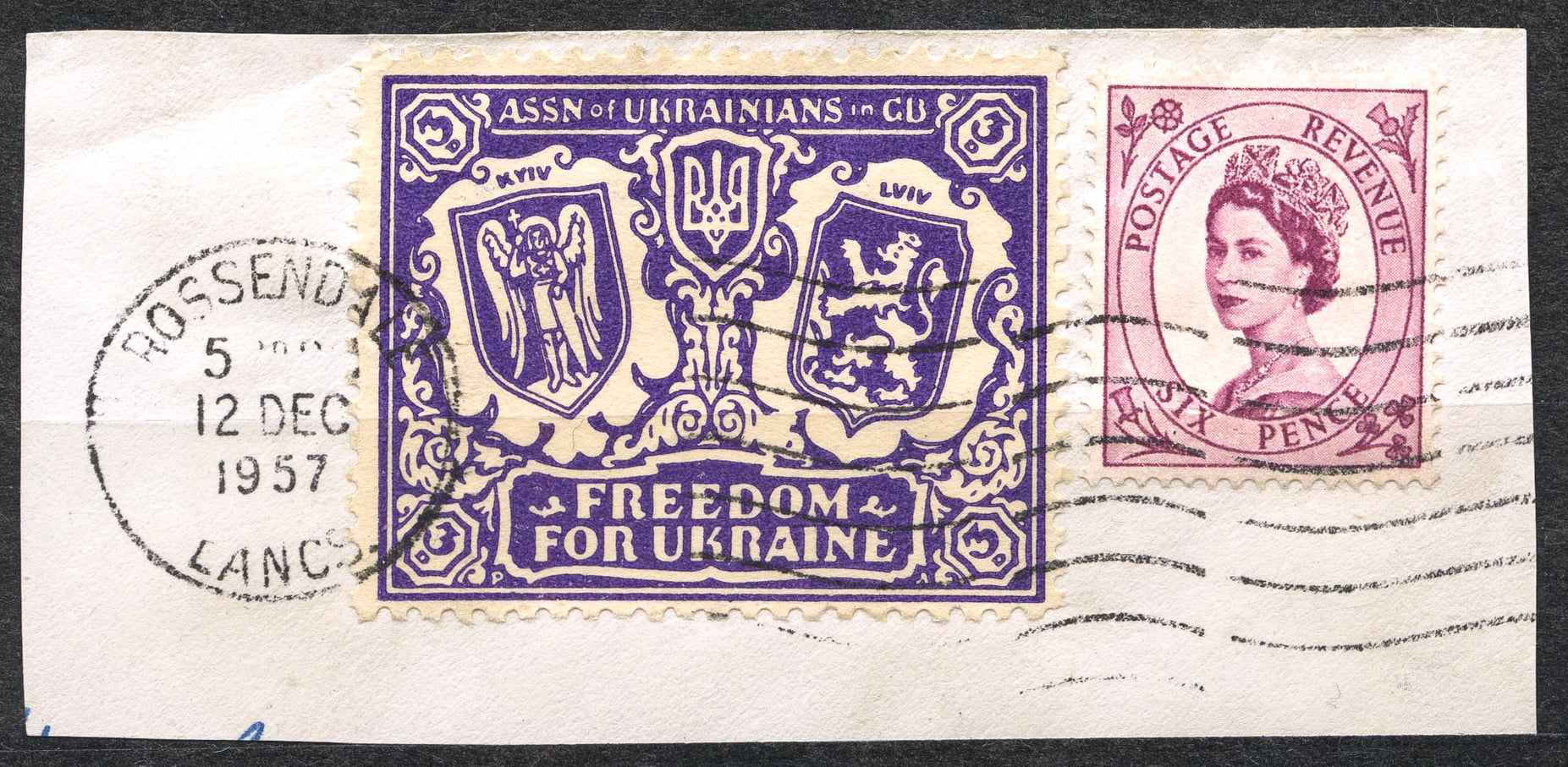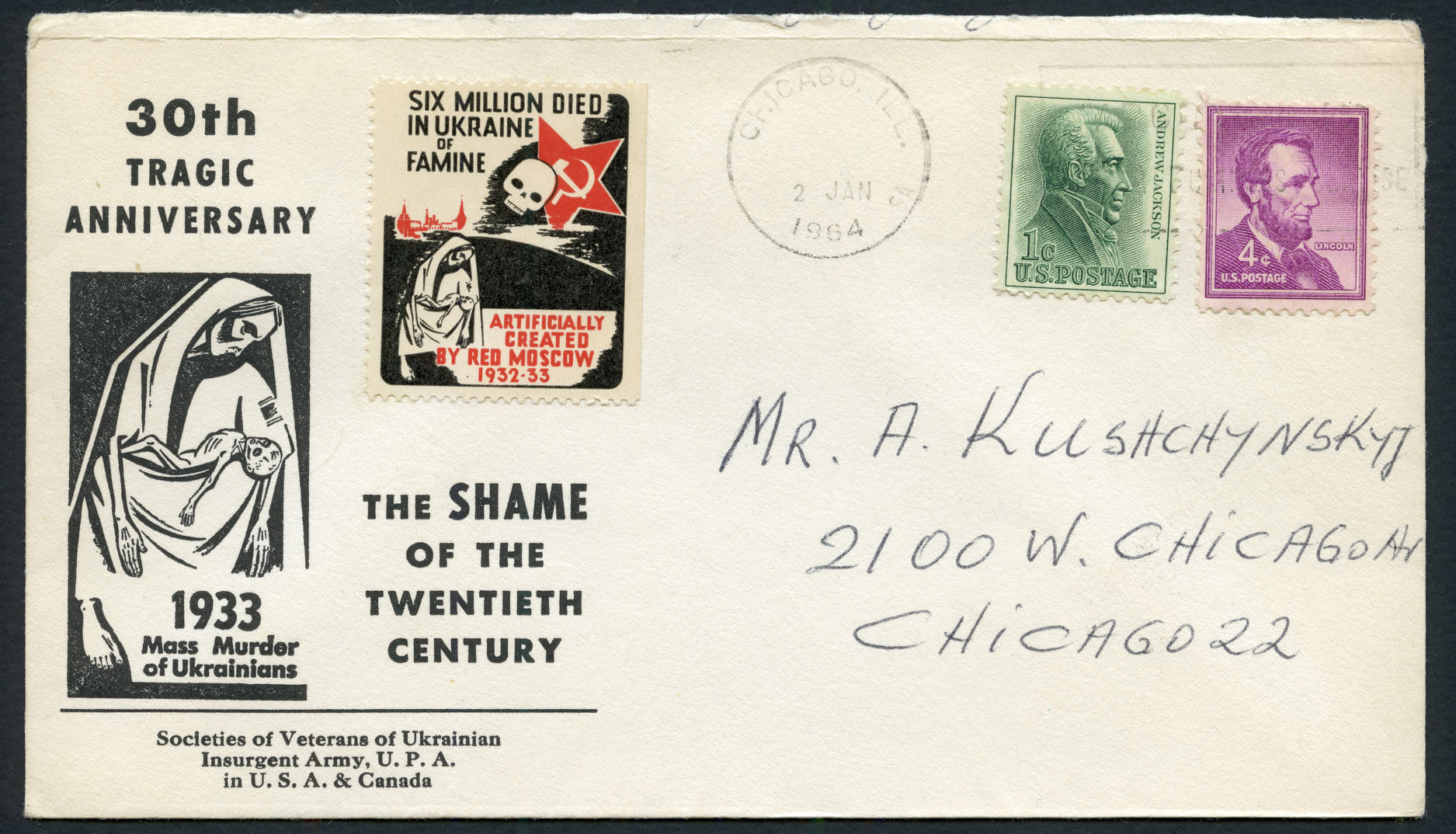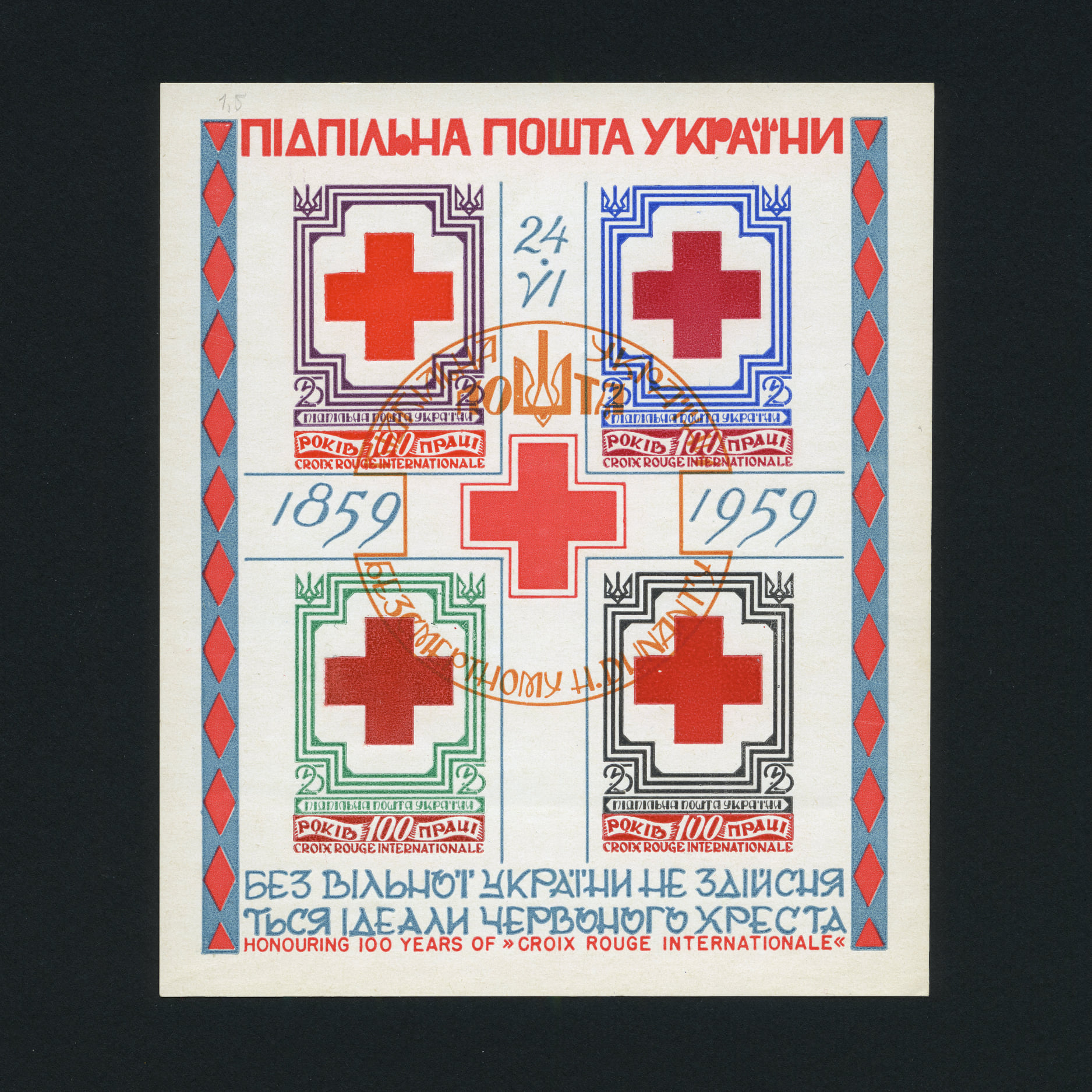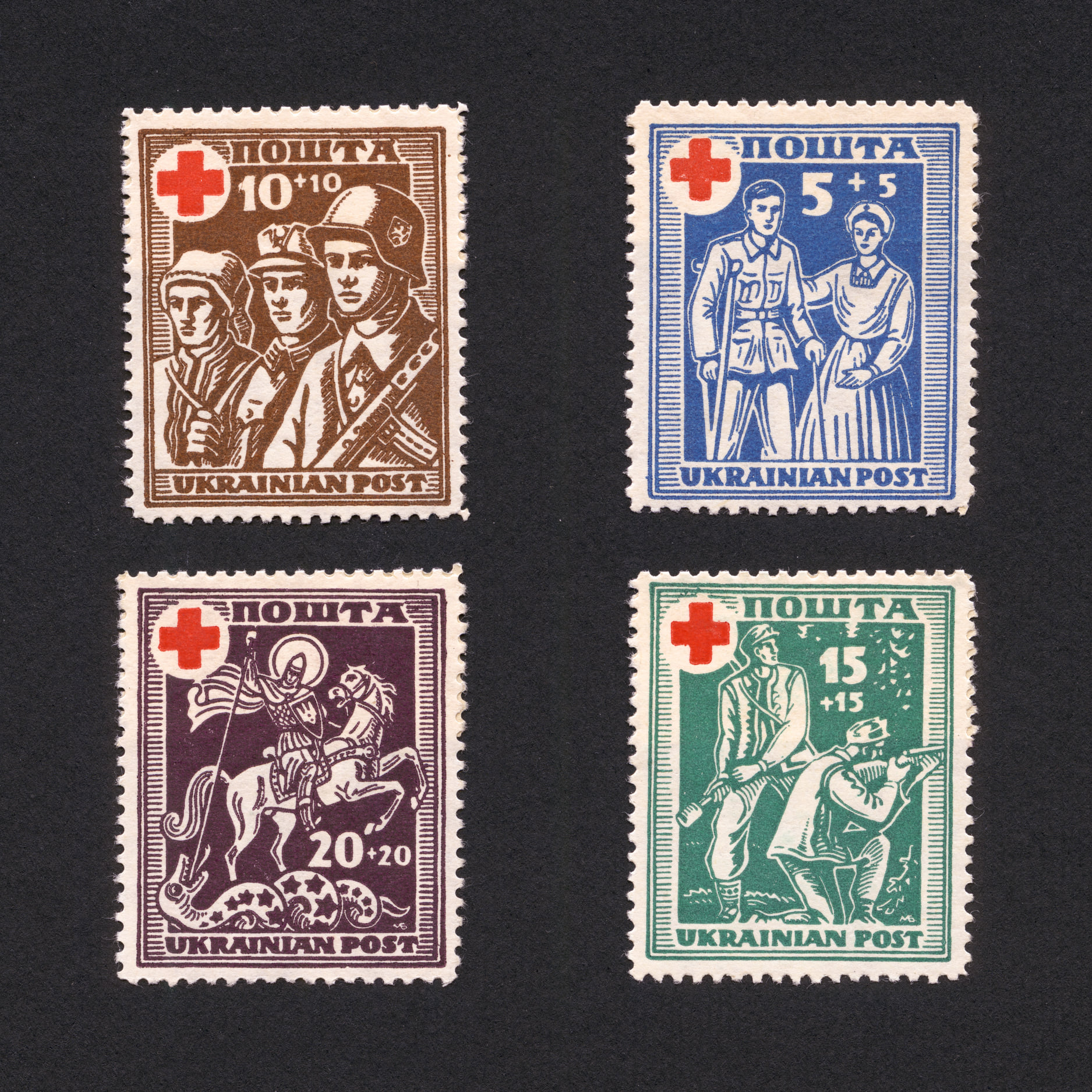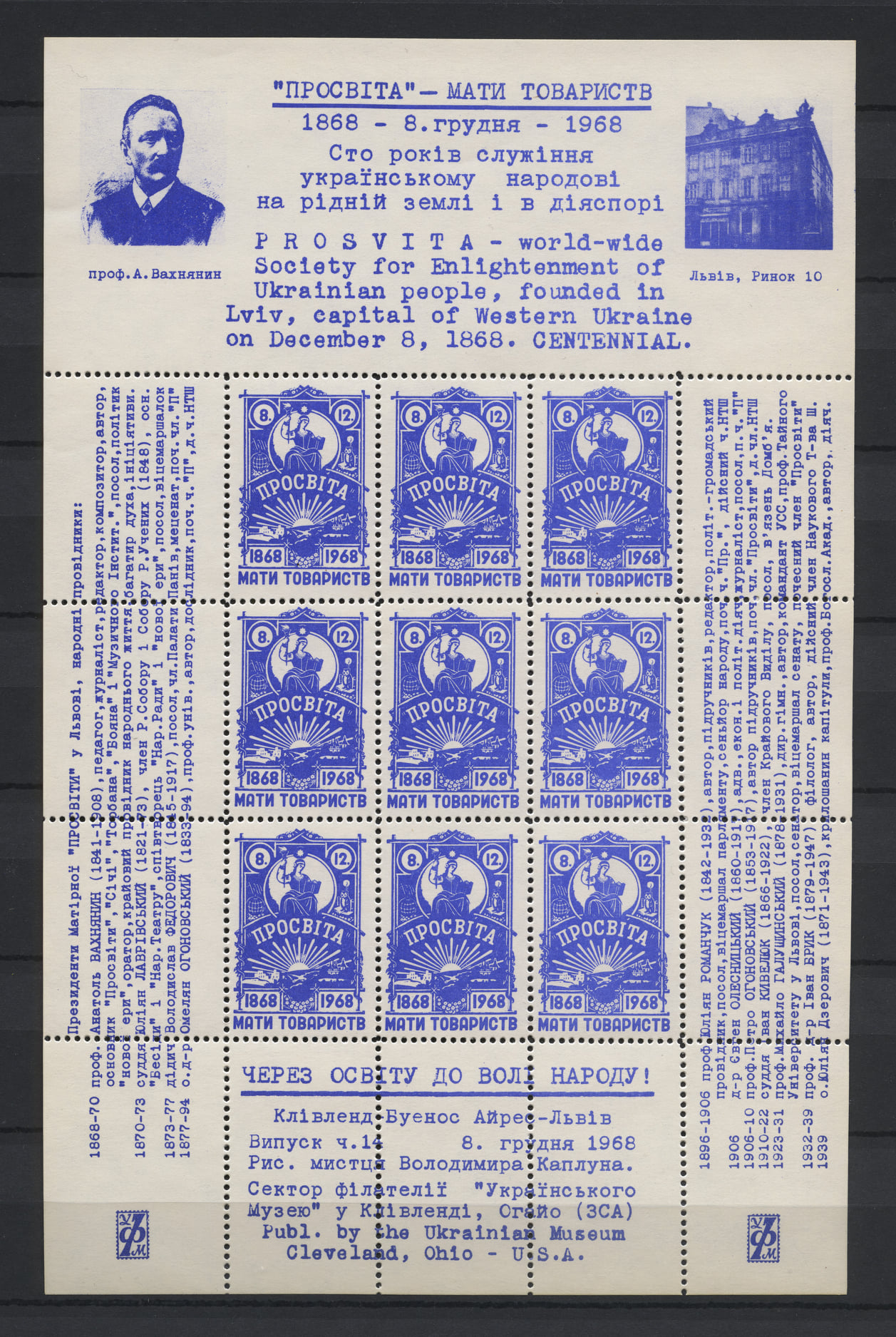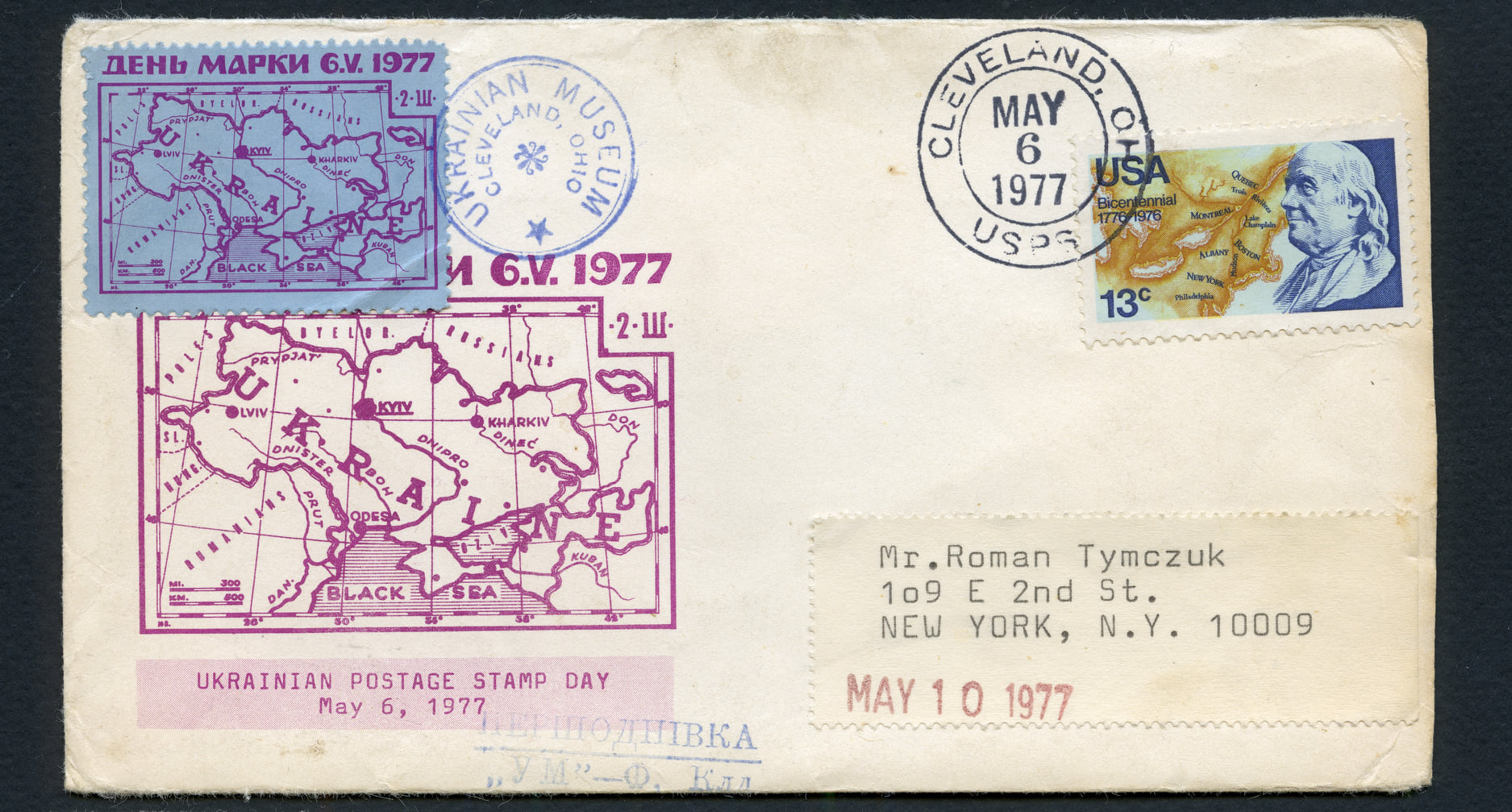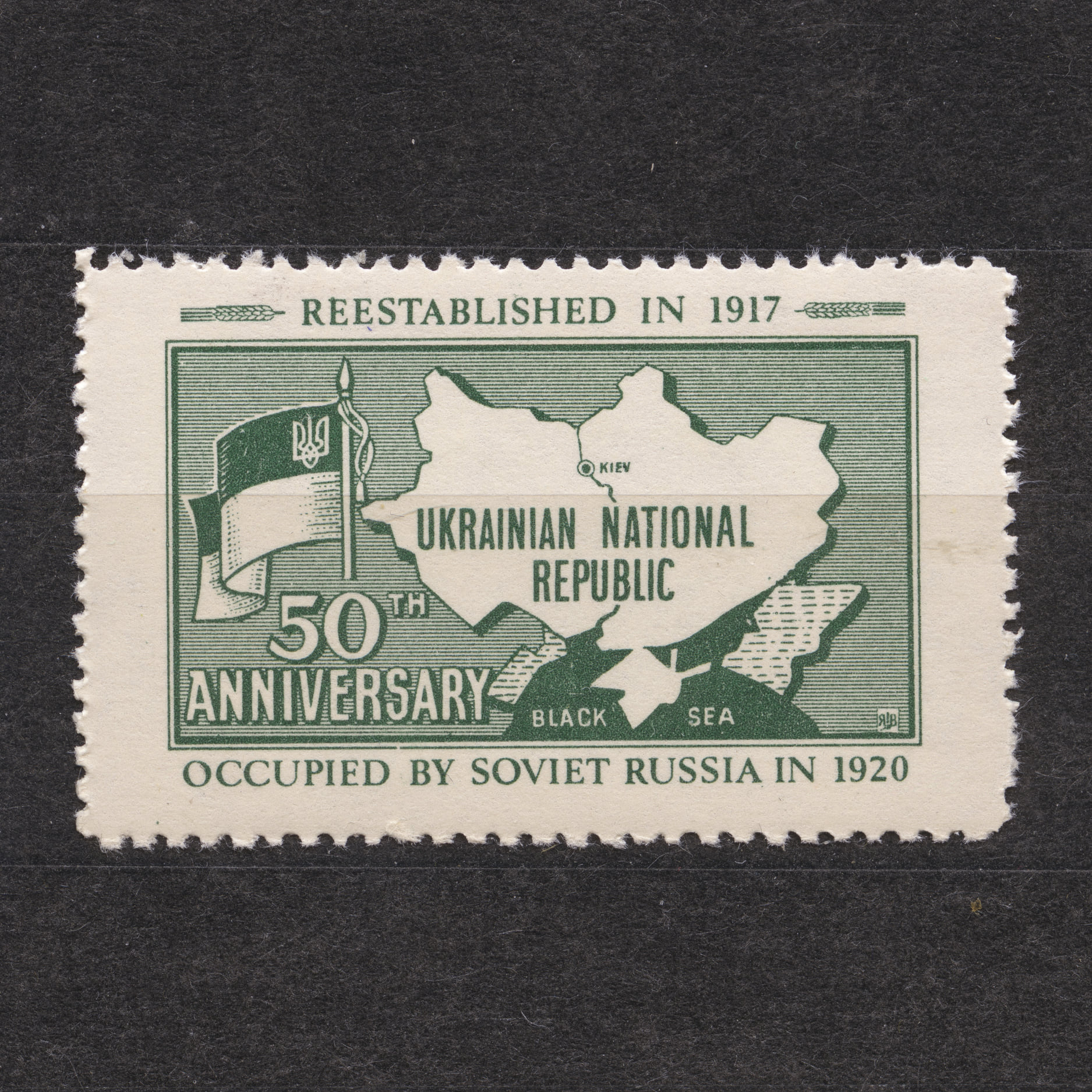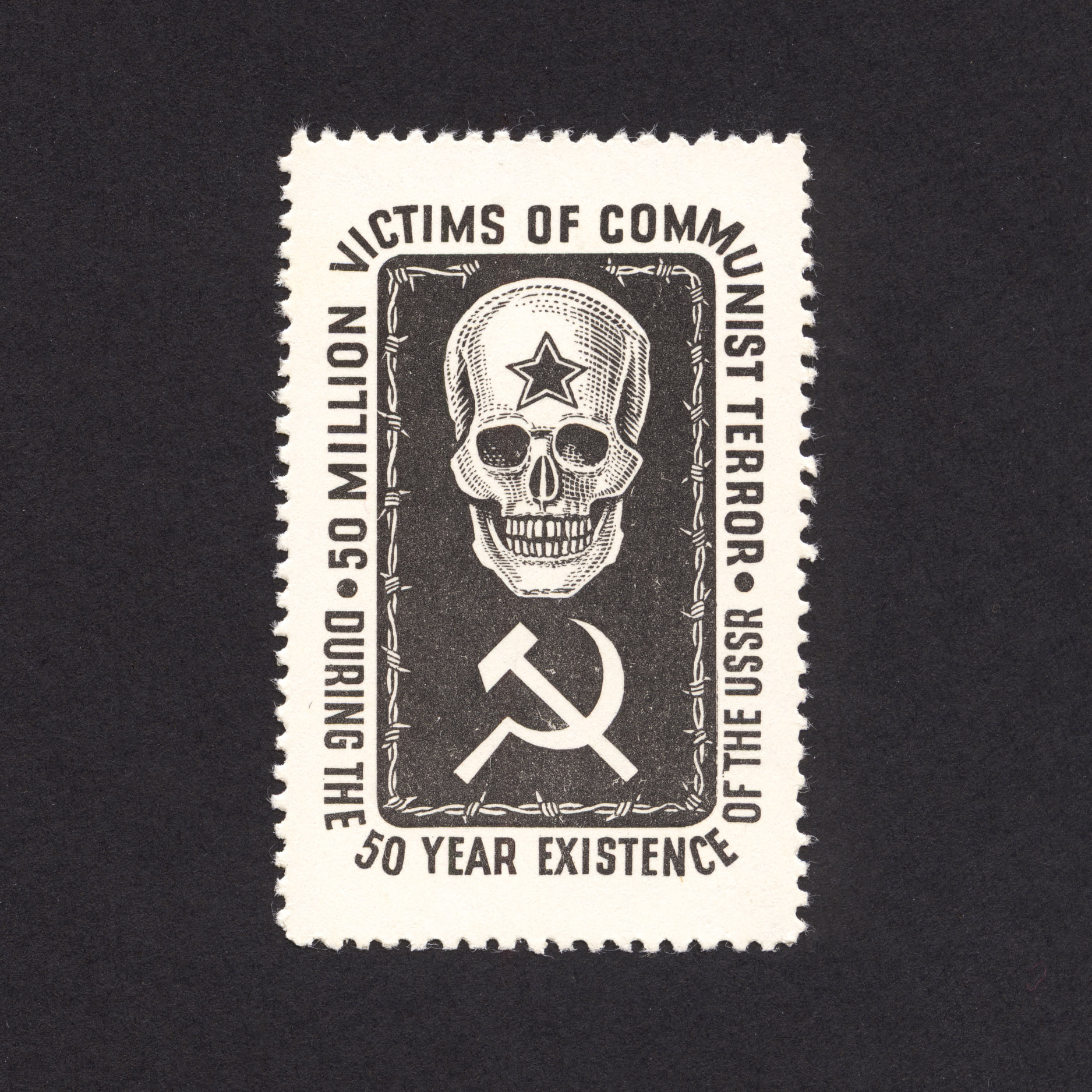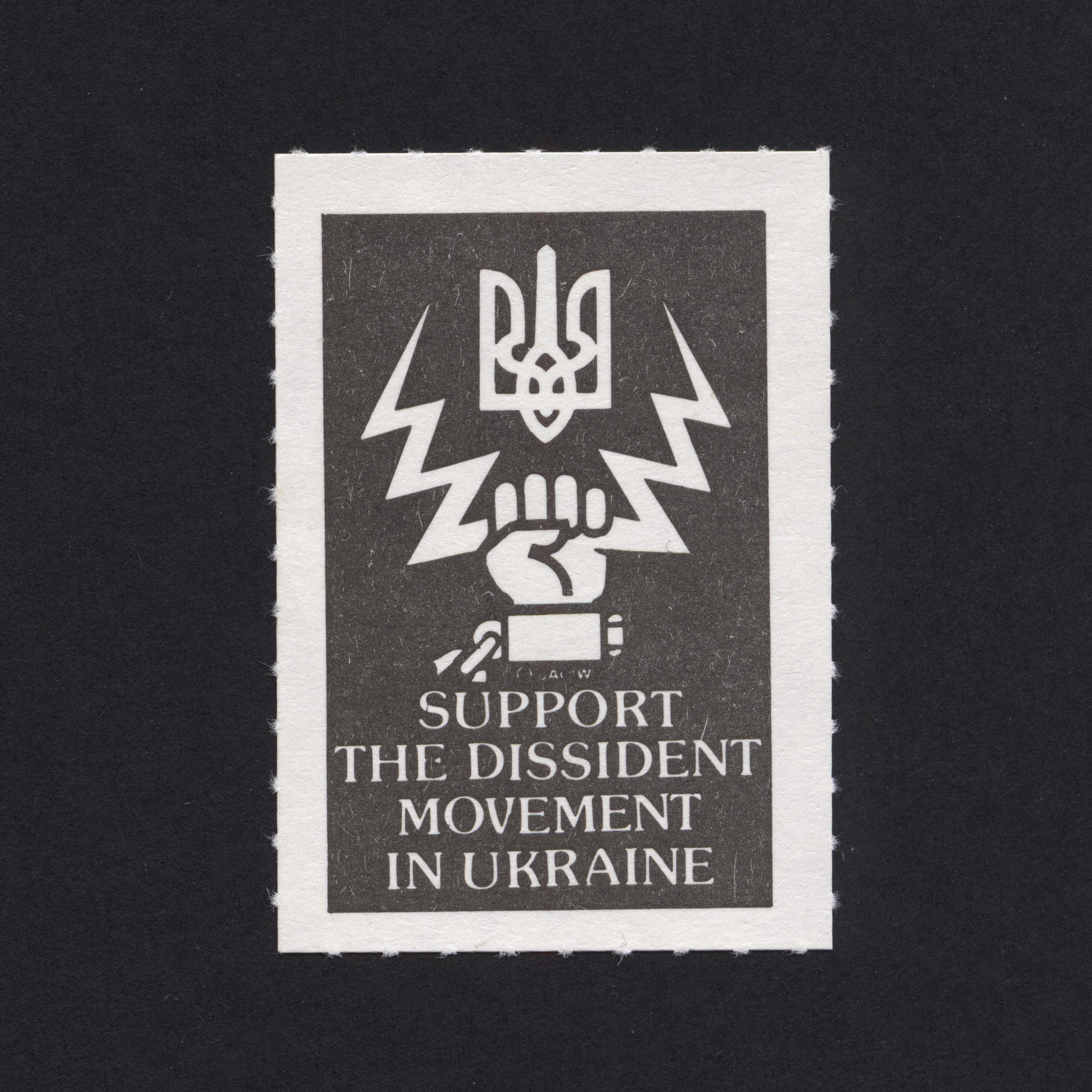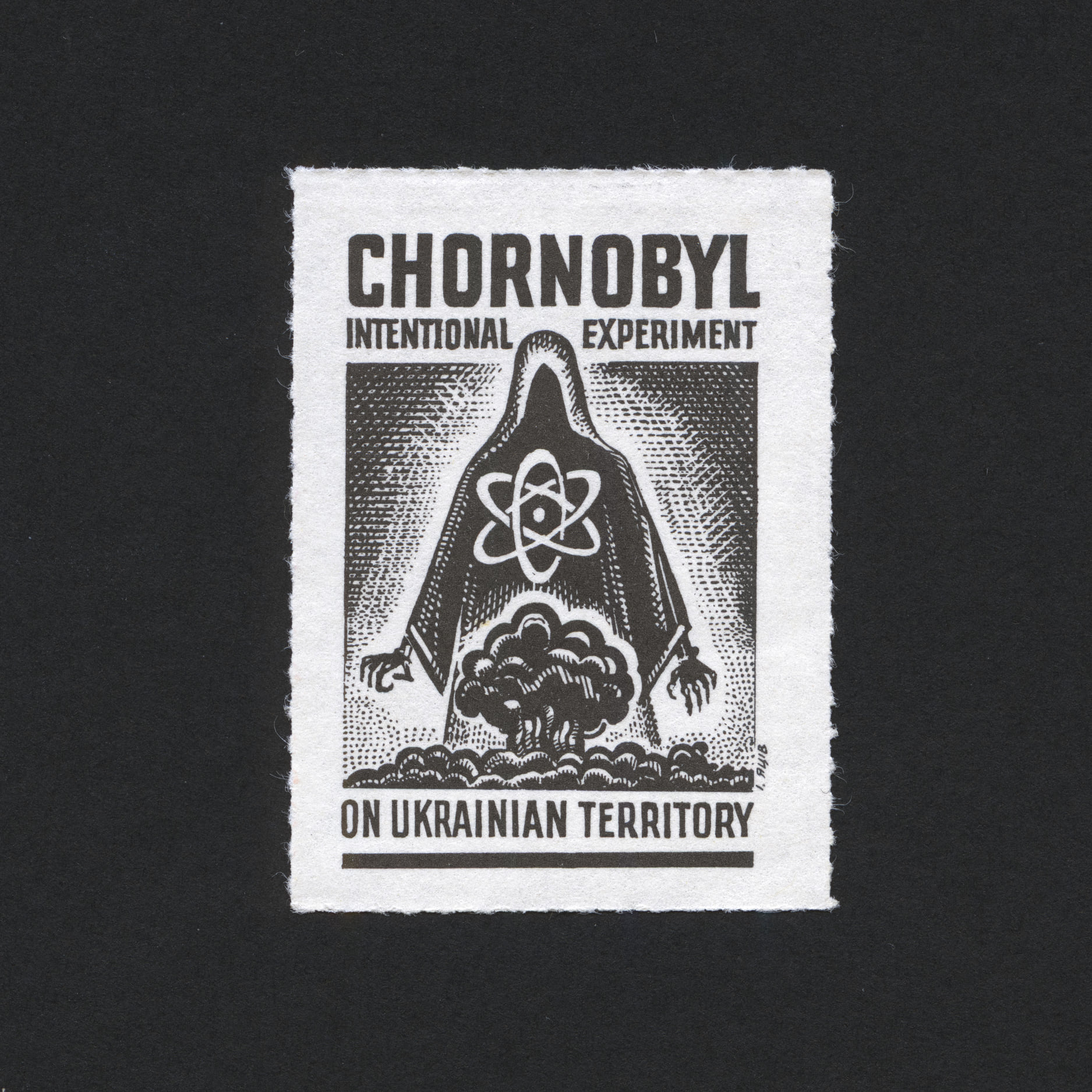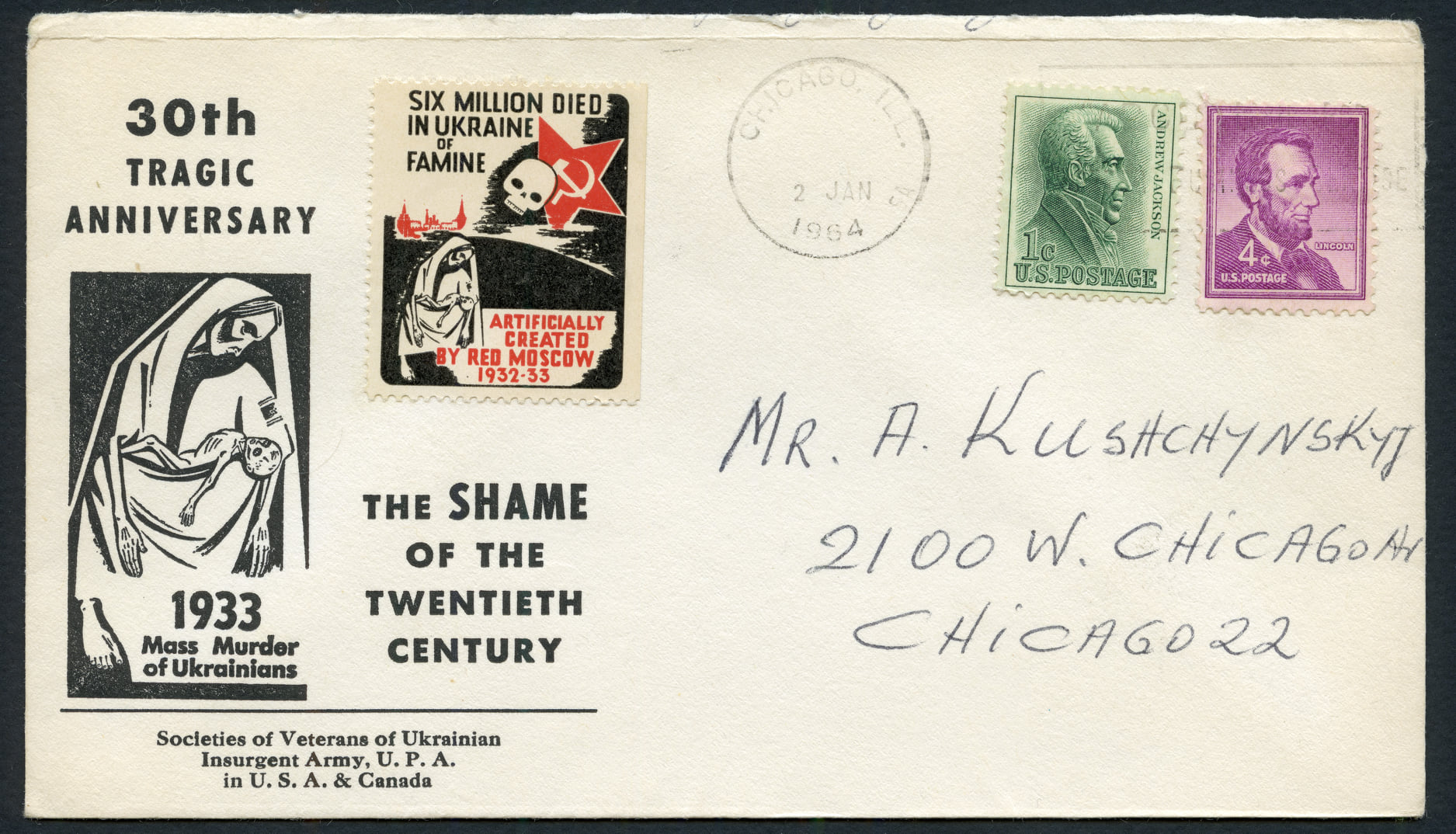Mr. Kosmach supposes that references to the Ukrainian Insurgent Army and accusations of “Russophobia,” were the reason for the censorship. Here we bring you the stamps from Mr. Kosmach’s collection published in The Guardian/The Observer, information about the stamps, and Mr. Kosmach’s investigation into the fact of the deletion.
The tumultuous XX century saw modern-day Ukraine:
- engulfed in World War I;
- emerge from the ruins of the Russian and Austro-Hungarian Empire and proclaim brief independence in a series of successive states;
- have its eastern part swallowed by the nascent Soviet Union in 1922 and its western by the Second Polish Republic, where the Organization of Ukrainian Nationalists was born;
- fall under the hammer of a killer famine and have its elite massacred in Stalin’s repressions;
- split up in allegiance during WWII, with one part fighting off Hitler’s invasion as part of the Red Army, while the other fighting both Hitler (after a short-lived romance) and the Soviet Army as part of the Ukrainian Insurgent Army (UPA);
- have its socio-political life Russified and repressed after the end of WWII, with sporadic rebellions in the face of Ukrainian dissidents.
The storm of this century sent rivers of politically active Ukrainians fleeing abroad. These emigrants formed organizations working toward the goal of an independent Ukraine. To keep their dream alive, they created an underground post for the purposes of political propaganda and published their own postal stamps which they glued next to the official ones. Today they are hunted down by philatelists and researchers. Oleksandr Kosmach is one of them.
In an interview with amnesia.in.ua, he explained how, after admiring the art of Heorhiy Narbut, who created the first stamps of the Ukrainian National Republic, he started exploring history through stamps of the underground post. Each of them is a work of art and a small page in Ukrainian history.
The artwork was sometimes created by well-known artists, the most famous one being Robert Lisovskyi, but most of the authors of the graphics remained anonymous, which only gives the underground mail a special charm.
The Ukrainian Underground Post is a specific organization, an unrecognized post office within the Foreign Post Office of the Foreign Parts of the Organization of Ukrainian Nationalist Revolutionaries (OUNR), which issued propaganda stamps in 1949-1983. But not only the Ukrainian Underground Post issued stamps, other organizations, such as the Ukrainian scouting organization “Plast” and “Camp Mail,” which united Ukrainians who found themselves in the camps of displaced persons in Europe after WWII, did too.
Usually, the underground stamps served as souvenirs – they were posted on letters and parcels side-by-side with regular postage stamps. But apart from propaganda, they were also to crowdfund causes such as “to help Ukrainian private schooling in Halychyna” in 1910 or for the monument to writer Kotsyubynskyi in Kharkiv.
“In this way, the diasporans supported the Ukrainian cause, consolidated, and informed the world about the liberation movement,” Oleksandr says “In our days this might seem not that big a deal, but we shouldn’t forget about the role of the post and philately before the internet age.”
He wants to organize and categorize his collection, so this phenomenon would not disappear into oblivion.
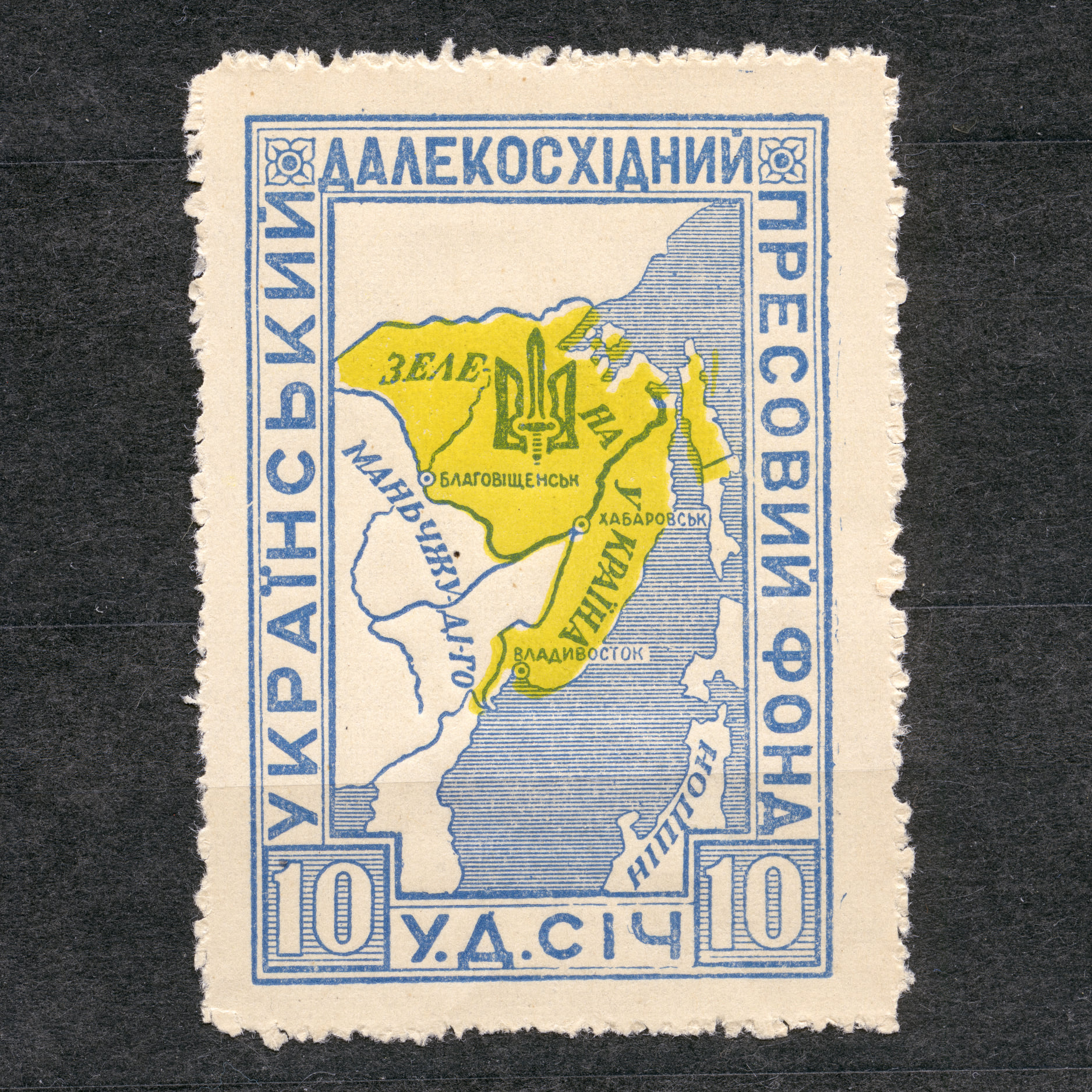
Recently I was contacted by Kadish Morris from The Guardian/The Observer with a proposal to make a short publication about my research on the post stamps released by the Ukrainian Independence Movement and Ukrainian diasporas across the globe.
I sent much more material than was required for editors to be able to choose what suited their audience and the format of the publication best. The stamps, that I provided, ranged from cultural, Christmas, and PLAST (Ukrainian scout organization) themes to those criticizing the Soviet regime. Of course, among them were stamps about UPA (Ukrainian Insurgent Army during the Second World War and about 10 years after). The editor, in the end, chose a lot of politicized stamps as well as a loud and striking title for the publication.
After two days, the publication was suddenly deleted. The email from the editor Elisabeth Ribbans claimed that their media outlet has received backlash from some readers and that the stamps require additional clarification and context:
“After the publication of the stamps gallery, a number of readers pointed out that the history behind these images is more detailed and complex than had been provided in the extended caption that was published with them. On reflection, it was felt that within the constraints of this design feature it was not possible to present the context and level of detail required to fully explain the history depicted on this page, so for this reason the online article was removed from the website.”
So instead of correcting the descriptions or the title, the publication has been deleted completely (yet still available in archived form – editor). I was ready to provide additional material to clarify the historical context, however, on request to do, so I received an automatic email response along those lines: the editorial board is small, yet we have many readers, so we might find time to respond, or we might not. To this day, they have not yet responded to my letter.

However, it gets even more interesting. Suddenly, multiple long articles have sprung up that criticized the publication about Ukrainian stamps in The Guardian/The Observer using old Soviet historical myths.
Among them was an article written by Craig Murray, a writer and activist who was removed from the post of the British ambassador to Uzbekistan after his conflict with his superiors in the Foreign Office after his criticism of methods used by the Central Intelligence Agency (CIA).
The publication date of his article “Cold Wars and Profit” on his personal website coincides with the removal of my material off The Guardian/The Observer. The article was been shared by a few dozen more media outlets. In it, Murray writes about systematic “Russophobia” in the Western media.
[boxright]FOR MORE ABOUT OUN-UPA
[/boxright]
He begins his article with criticism of the deleted publication about the Ukrainian diaspora’s stamps and especially UPA, whose stamp was present among others. Murray labels the Ukrainian Insurgents as Nazi collaborators, while at the same time mentioning that they fought against German forces in WW2. He accuses The Guardian/The Observer of publishing controversial materials, comparing it to publishing Nazi art with no context.
By blaming UPA for “ethnic cleansing of Polish people” Murray ignores the context of 1000 years of similar confrontations on this territory, and Second Polish-Ukrainian War during which there were equal ethnic cleanings of Ukrainians, and in general, the context of the 20th century when everyone was “friendly” with Nazi Germany and Nazism including Poland, UK, and the Soviet Union, among others. To be consistent, we must declare these states as Nazi collaborators and demand condemnation of their actions.
“That is so misleadingly partial as a description of the art glorifying the UPA movement as to be deeply reprehensible. It does however fit with the anything-goes stoking of Russophobia, which is the mainstay of government and media discourse at the moment. Even at the height of the Cold War, we never saw such a barrage of unprovable accusations leveled at Russia through the media by ‘security service sources’.”
Again, we are talking here about the article titled “Cold Wars and Profit” concerning “Russophobia” in Western media. In other words, the publication of stamps that were printed by Ukrainians in a forced exile due to losing in the war against the occupants of their land, stamps that celebrate the Ukrainian movement for independence are labeled as “Russophobia.”
[boxright]FOR MORE ABOUT THE HOLODOMOR
[/boxright]
Another article, says it directly in the title “Guardian scrapes new depths with its anti-Russia propaganda.” Its author, Justin Wyllie, coincidently is “interested in Russian culture and history,” and is now based in Tatarstan, Russian Federation. It mentions that the Holodomor (it was present on one of the stamps in the publication) “was not tackled as effectively as it might have been by Stalin.” That is, Stalin, according to the author, is not the creator of the Holodomor, but a fighter against it.
The same author notes that the accident at the Chernobyl nuclear power plant (there was also a stamp about it) happened due to the poor design of the American (whose else) reactor. He compares the publication of a small post with Ukrainian stamps with a “reprint of Mein Kampf:”
“This famine – which also affected other grain-growing areas of the USSR – was not tackled as effectively as it might have been by Stalin.”
One more article written by Yasha Levine, a Russian-American “investigative journalist,” titled “Just another Monday: Nazi collabo propaganda in the Guardian” claims that the leaders of OUN and UPA “pledged allegiance to Hitler” and were “focused on creating a racially pure, fascist state.”
[boxright]FOR MORE ABOUT UPA AND THE NAZIS:
[/boxright]A few words for Christopher Miller about “Banderites” and Ukrainian history
The journalist probably forgot to investigate the fact that members of UPA were of multiethnic origins and that Bandera was imprisoned by the Nazis after proclaiming the Act of Restoration of the Ukrainian State. The journalist who was published in Wired, The Nation, Slate, TIME, The New York Observer seems ignorant to the fact that neither OUN nor UPA, and not even the battalions “Nachtingall” and “Roland” created with the help of the Abwehr in 1941, nor SS-Volunteer Division “Galicia” were prosecuted under the Nuremberg Trials (the result of which was supported by all victor states after the war).
All these military structures were not recognized as criminal. These decisions were based on various valid documents. For example, in 39th volume, page 269 of the Trials we find German orders to kill off the followers of Stepan Bandera since they fought for Ukrainian independence.
Probably, there are more of such articles on the internet, but the ones given here are sufficient to understand the reasoning behind the removal of the Ukrainian stamp publication.
It seems that The Guardian editorial board miscalculated twice. Firstly, when they did not check the materials they were publishing and secondly when they did not bother to verify the criticism of the publication. Such an approach seems to be normal for today’s media; however, I did not expect this from The Guardian/The Observer.
As a consequence, they themselves have received a hard blow to their reputation, since by deleting the material they confirmed the ”accusations.” Furthermore, the English-speaking audience will now equate the Insurgents who fought on the three fronts for the land they were born on, to Nazi occupants and my name with “Nazi glorification.”
The publication of a small article with the images of the Ukrainian diaspora’s old post stamps is an unremarkable event, just like its removal. Yet, the surrounding situation is a symptom of much more important processes. There is a lobby among English-speaking authors who methodically nourish Soviet historical myths and advocate an imperial worldview of Putinist Russia. Such a brand like The Guardian, despite its caliber and the specifics of UK-Russia relations, is not prepared for the pressure from the last one.
– Oleksandr Kosmach
Note: Euromaidan Press had reached out to The Guardian for a comment but had not received a response at publication time. We will update this article if we do receive one. The initial version of Oleksandr Kosmach’s piece was based on an incorrect translation of the reference to Stalin in Justin Wyllie’s article. We sorted out the translation mistake and publish an amended version of Kosmach’s piece.

